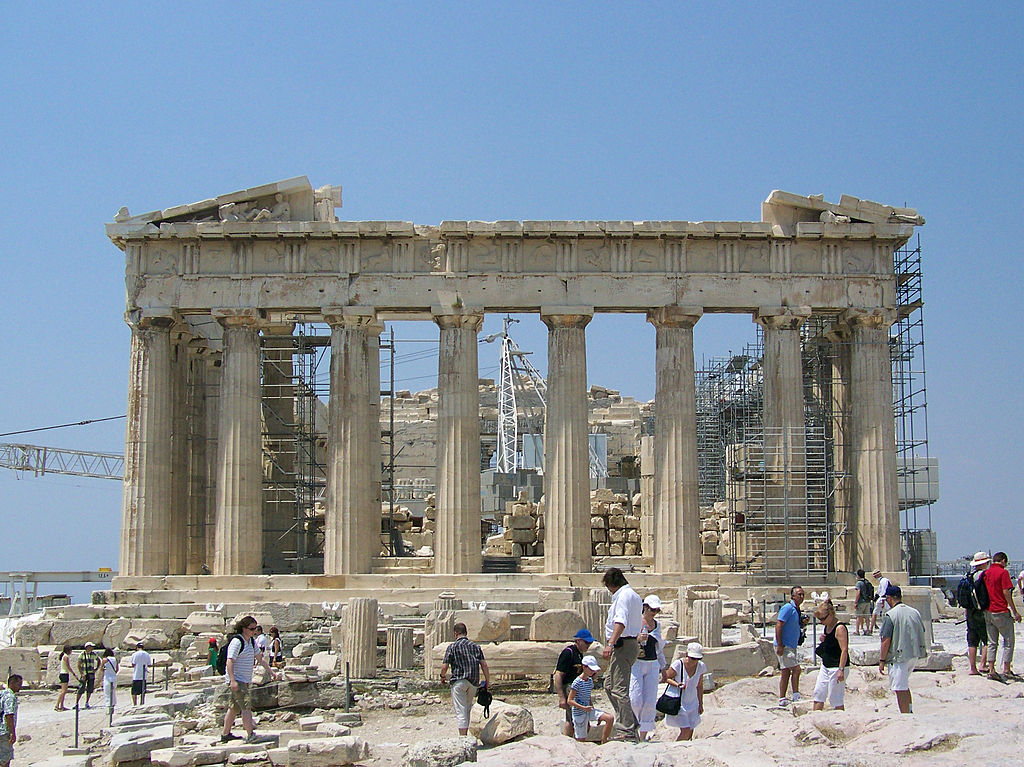Okay, it’s grossly incorrect to call the Parthenon “wonky,” but the truth is that the horizontals and verticals in the structure are not straight.
Actually, the architects did that on purpose.
The Parthenon, which stands atop the highest point of the Acropolis in Athens, is made entirely of fine, white marble. Pericles, the charismatic military leader in Athens (whom his contemporaries sarcastically referred to as Zeus), spared no expense when he rebuilt the religious buildings in the sacred sanctuary in order to celebrate the Athenian’s final victory over the Persians.
The Parthenon is dedicated to Athena, the patron deity of Athens and goddess of wisdom and war.
(The sculptures from the building, designed by Pheidias, are no longer there. They are in London.)
We call the idiosyncrasies in the design of the Parthenon the refinements, and they are the result of very sophisticated mathematics. They include:
1. Curvature of the horizontals: they all curve up in the middle
2. Curvature of the columns: they curve out near the middle
3. Inclination of the verticals: they all lean in slightly
4. The end columns are thicker than the others
Why did Kallikrates and Iktinos do this? No one knows for sure, but there are some theories.
Some think that the refinements compensate for the irregularities that occur when one looks at a very broad horizontal from a distance and the center appears to sag. Others think that the refinements are there to make the building look bigger than it is.
Still, others believe that the tension between the irregularities of the refinements contrast with the mathematical purity of the overall design, which gives greater life to the building and provides it with an organic quality.
More images of the Parthenon
[nggallery id=25]
Recommended Reading and Viewing

